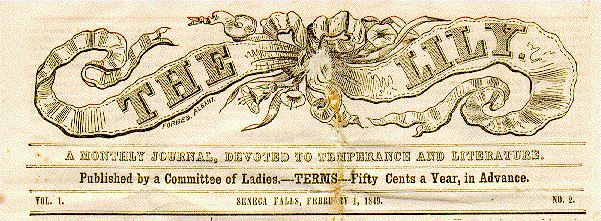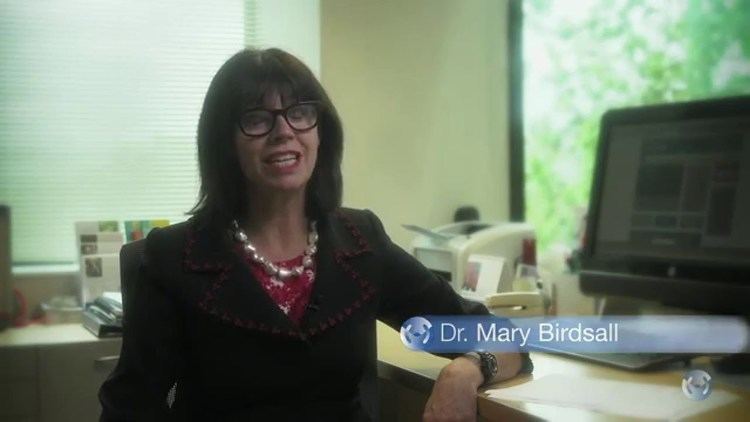Residence Mary Birdsall House Known for Suffragist | Spouse(s) Thomas Birdsall Name Mary Birdsall | |
 | ||
Born 1828 Cincinnati Died 1894 (aged 65–66)
Philadelphia | ||
Dr Mary Birdsall, Chair Fertility Associates & Fertility Specialist
Mary Birdsall or Mary Thistlewaite (1828–1894) was a journalist, a suffragist, and a temperance worker. She helped organize the first women's rights convention in the nation and was among the first women to address the Indiana legislature. She was also the owner of The Lily, a newspaper for women.
Contents
- Dr Mary Birdsall Chair Fertility Associates Fertility Specialist
- Early life
- Early Activism
- Indiana Farmer
- The Lily
- Indiana Womans Rights Convention
- Indiana State Legislature
- Later life
- Birdsall House
- Legacy
- References

Early life

Mary B. Thistlethwaite was born in 1828 in Cincinnati, Ohio to a Quaker family. Her father Thomas Thistlewaite, a butcher, was born in Leeds and he had married Elizabeth Wetherall. They already had a son who had been born in Wilmington, Delaware where her father had been a farmer for several years. In 1829 the family moved to Richmond, Indiana, in Wayne County, where her father amassed a considerable amount of agricultural land around the then new town. At age 19 she married Thomas Birdsall at a Whitewater Monthly Meeting, they both worked together to forward their radical views on emancipation, temperance and women's rights. Thomas was known to her family as he had worked in her family's mills.
Early Activism
As Quakers, Birdsall and her husband, Thomas, were active in a number of social reforms including temperance, suffrage, and abolition. In 1851 the couple attended anti-slavery meetings at Congregational Friends Church of Greensboro and a subsequent meeting at United Brethren Church in Dublin, Indiana. It was at these meetings that the idea to hold the first Women's Rights Convention was generated and organized. The couple regularly attended Whitewater Monthly Meetings in Richmond, Indiana the same place where they were married. These business meetings were meetings of The Society of Friends, or Quakers.
Indiana Farmer
The Indiana Farmer was a newspaper devoted to agriculture, mechanics, and the useful arts. Birdsall served as the Women's Editor, she wrote about topics like home management, women's labor, and holiday celebration. Birdsall used her editorial position to further advocate for woman's rights. In Volume III Number III Birdsall was announced as the editor and she made the following statement, "we shall endeavor to arouse her (woman) to a sense of propriety of taking more actively into her own hands the management of her interests horticulture, floriculture, and the merits of various species of utensils used by women, the formation and arrangement of dwelling houses in which no part of the human family has greater interest than she -- and various other subjects of great importance to women." Birdsall continued her work with the Indiana Farmer for at least 11 issues, after Volume VII Number XV no editorial credit is given to Birdsall, and after Volume VII Number XVIII the Women's Department disappeared from the publication for some time. It is not clear why Birdsall ceased editing for the Indiana Farmer; it was eventually sold and moved to Indianapolis, Indiana.
The Lily
The first newspaper created for and by women was The Lily. The newspaper was created by women's rights and temperance advocate Amelia Bloomer in 1849. The newspaper had recently increased its circulation considerably part of this was due to Bloomer's mission to forward the novel divided leg clothing for women which were known as "Bloomers" that had become associated with her. Amelia Bloomer was moving and wanted the newspaper to continue. Birdsall bought the paper in 1854 and continued to use Bloomer as a corresponding editor. The nationally distributed newspaper continued to maintained an editorial focus on temperance, dress reform, suffrage, women's rights, and the repeal of unjust marriage and inheritance laws. The newspaper continued to be published in Richmond for at least the next five years. The editing and publication of the Lily was undertaken in partnership with Dr. Mary F. Thomas, who would also share in Mary's next political undertaking.
Indiana Woman's Rights Convention
The First Indiana Women's Rights Convention was scheduled to take place on October 15, 1852 in Richmond, Indiana. Birdsall was elected to be Secretary of the convention, and the second convention held the next year in Richmond. Next she served as the Vice President of the 4th National Women's Rights Convention that was held in Cleveland, Ohio in which Lucretia Mott was present. The 1854 Woman's Rights Convention moved from Richmond to the capital city Indianapolis, Indiana and was held in Masonic Hall, where it was regarded with disdain by local press. Despite this the convention continued meeting in Indianapolis for several more years and attracted national members in the suffrage movement. In 1858 the convention returned to Richmond, it was during this meeting that the petition to the Indiana State Legislature was composed. The advent of the Civil War pushed suffrage and women's rights out of view and the next convention was not held in Indiana until 1869.
Indiana State Legislature
On January 19, 1859 the House and the Senate were convened together during a rare joint session of the Indiana State Legislature. Mary Birdsall, Dr. Mary F. Thomas, and Agnes Cook presented a petition requesting the same rights of property and suffrage be afforded to women as were granted to men, they were the first three women to address the Indiana State Legislature. The petition was signed by over one thousand residents of Wayne County with signatures from both women and legal male voters. Dr. Mary F. Thomas was the first to speak, she gave a speech and presenting the petition. Birdsall spoke next, her speech was described as "a clear and logical plea in behalf of the right of suffrage in women". Only Thomas' address was published despite the legislative resolution that the addresses of both women would be printed, no copy of Birdsall's address exists today. Their speeches were titled the "Women's Rights Petition" but were informally described as a "jollification". Agnes Cook spoke next addressing how an enfranchised women would be more effective in the cause of temperance. Although the legislature did not react to the women's speeches by extending the vote to women, their efforts paved the way for other Hoosier women to fight for the vote by addressing the legislature.
Later life
Mary and Thomas moved to Philadelphia, Pennsylvania it is unknown exactly when and their house in Richmond was rented out. Birdsall continued to be active in her community until her death. Birdsall died in Philadelphia in 1894 and her body was returned for burial in Richmond. Her funeral was originally scheduled to be held in her home but at the last minute was moved to her brother Timothy's home. She was buried in Earlham Cemetery. Thomas Birdsall died in 1901 in Richmond.
Birdsall House
Construction of the house began in 1859, it was being built for Mary and Thomas Birdsall. The Italianate brick-build house is located on a large lot at the northwest corner of West Fifth Street and Richmond Avenue in Richmond, Indiana. It is said that the house design was "technologically progressive, healthy, and emancipating" reflecting the concept of "domestic architecture" advocated by Catherine Beecher and Harriett Beecher Stowe. The house was sold in 1899 to Charles and Laura Moore. The house was acquired by Whitewater Monthly Meeting of the Religious Society of Friends in 1927. It was then used as a retirement home for the elderly and as a temporary meeting place for worship. The society extended the building adding bedrooms, a kitchen, and back stairs. The Lauramoore Retirement home was privately incorporated in 1951 and operated until 2010. The company that owned the building then gifted it to Earlham College. The house is now known as the Lauramoore Guest House and Retreat Center and it also hosts visitors to Earlham College. In 1999 it was listed on the National Register of Historic Places.
Legacy
Birdsall was one of the first women to address the Indiana State Legislature. She was the owner and editor of the first newspaper edited by and for women, The Lily. Birdsall's house is now owned by Earlham College and it is on the National Register of Historic places. In 2007 a plaque was placed in the garden to commemorate Birdsall's life.
